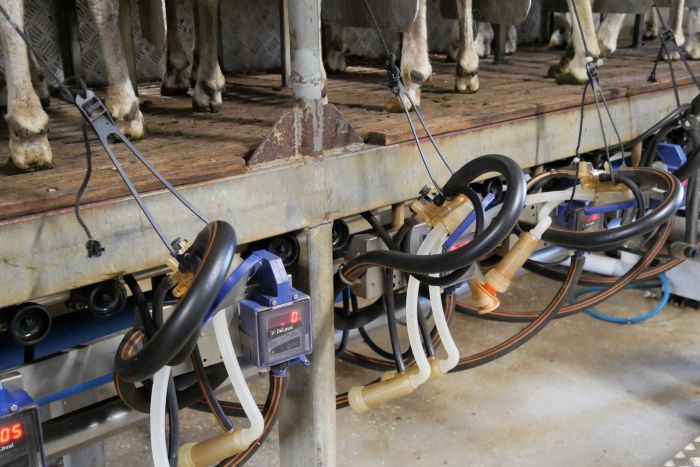
They follow each other into the shed and enjoy a high-protein grain breakfast while husband-and-wife team Scott and Nicole Clements attach milking machines to their udders.
In just a few short hours the sheep will be back in lush paddocks and reunited with their maturing lambs.
Porongurup Pure is a sheep dairy in Western Australia and sits at the base of the picturesque Porongurup Range along the state’s south coast.
The Clements breed East Friesian sheep for the dairy and also keep a small herd of jersey cows for milking.
While they both had a background in agriculture, neither Scott nor Nicole had any dairy experience before they started milking sheep and processing cheese.
“Initially we just loved milking the animals, we loved working with them and it was great fun, but then we had all this milk,” Ms Clements said.
“We started with milk, yoghurt and then feta, and then, using the farmers’ market, we have branched into other types like Manchego and haloumi.”
A sweet and unique taste
The East Friesian (or Friesland) breed originates from the Netherlands and they are the highest-milk-producing sheep that can be imported into Australia.
“There are a lot more goat dairies around, and a sheep dairy is unique, but we say it’s a better milk to make cheese,” Mr Clements said.
“It’s quite sweet in flavour — not what you think, it doesn’t smell like a stinky shearing shed or anything like that.
“It is actually really nice and we get a lot of tours come thorough to do a blind taste comparison.
“People actually prefer the sheep’s milk; they’re quite surprised with what it tastes like.”
A shared dairy system
Porongurup Pure operates a share-milking system where the lambs remain with their mothers during the day and are separated at night.
“In the afternoons we bring the lambs up, it takes them about a week to learn and they go into a nice shelter out of the cold,” Mr Clements said.
“They have pellets and hay and the ewes come back in the morning, we milk them and join them back up.
“The lambs actually grow faster because they are kept warm at night and not burning energy in the paddock.
“We also never have any issues with mastitis because the ewes have got a constant draw.”
Share milking also means the Clements can enjoy a day off every now and then.
“We don’t have to milk every day if we don’t want to,” Mr Clements said.
Learning the secrets to good cheese
An East Friesian sheep’s milk produces more cheese per litre than cow milk.
“It’s quite different to work with, you add a lot less rennet,” Ms Clements said.
“It is almost similar to the animal — it’s a sensitive milk that doesn’t like to be knocked around, it likes things to be cool and calm and doesn’t like to be harassed.
“Cow’s milk is a bit more forgiving.”
Trial and error play a big part in cheese making and the Clements have had their fair share of failed batches.
“There are a lot of holes with a lot of cheese buried around the farm; we did think about getting pigs at one stage,” Ms Clements said.
Plenty of books have been read and other cheesemakers sometimes share their tips, but it’s usually a case of experimentation, according to Mr Clements.
“It is such a small industry, so people will tell you a lot of things but don’t want to give away all of their secrets,” he said.
“The farmers’ market for us has been the top place to trial new products.”
Keeping up with local demand
Ms Clements said while they did supply a handful of businesses in Perth, most of their cheese and milk was consumed in the Great Southern region.
“Summer is the biggest trade time when there’s a lot of people moving through,” she said.
“Our local base is growing each year and the support has been fantastic.”

























